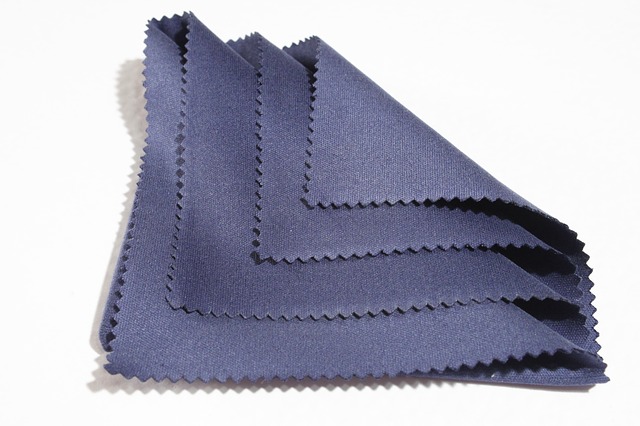Kevlar in the construction industry

|
[edit] Introduction
Kevlar is a strong, heat-resistant nylon-like polymer invented in 1963 by Stephanie Kwolek, a US-based scientist, as part of her work for chemical giant DuPont. Kwolek had been researching strong, synthetic textile fibres since 1950, particularly their manufacture from long chains of molecules for use in light yet strong tyres.
Kevlar (poly-para-phenylene terephthalamide) is a low weight, high strength material that is stable at high temperature and whose fibres are claimed to be five times stronger than steel per unit weight (in tension). It is used for heat- or flame-resistant fabrics, radial and bicycle tyres, bulletproof vests, walking boots and fibre-reinforced composite materials for aircraft panels, boat hulls and golf-club shafts. It has also been used as a substrate for membranes used in fabric structures.
Like many innovations, Kevlar was discovered almost by accident. Kwolek was looking to create a better way of joining monomers (simple molecules) to polymers (longer chains) through low-temperature fusion. Instead of the clear solution she thought she would achieve, the result was an opaque liquid of low viscosity. When subsequently spun into fibres (ropes or fabric sheets) the liquid created a new type of synthetic material which, unlike nylon, did not break easily. In the patent application, Kwolek described it as a ‘highly orientable, crystallisable, filament-forming polyamide’.
Typically, Kevlar spun-fibres have a tensile strength of around 3,620mPA due to the many inter-chain bonds. Its relatively rigid molecules form mostly planar sheet-like structures which keep their strength and resilience down to around -196°C. At higher temperatures, the strength is slightly reduced.
In 1971, Kevlar was marketed commercially and first used as a steel substitute in racing tyres. More recent uses have included armoured walls for panic rooms, marine current turbines and wind turbines, smartphones, expansion joints and hoses.
In building construction, Kevlar can be formed into a sheet material for roofing, cladding and reinforcing. It was used unsuccessfully on the roof of the Olympic Stadium in Montreal which only lasted 10 years before it had to be renewed. It can be used to protect bank counters and reinforce seismic shear walls. However, it can be problematic to install and when used structurally, the structural calculations can be difficult. It is also very expensive.
Three types of Kevlar and their uses:
- Kevlar – for car- and bicycle-tyre reinforcement to help resist punctures.
- Kevlar 29 – armour for lightweight military vehicles and protection of personnel inside them.
- Kevlar 49 – used in aerospace and marine applications. In boat hulls, it can withstand tensile, torque and twisting forces and is stronger than fibreglass.
[edit] Related articles on Designing Buildings Wiki
Featured articles and news
RTPI leader to become new CIOB Chief Executive Officer
Dr Victoria Hills MRTPI, FICE to take over after Caroline Gumble’s departure.
Social and affordable housing, a long term plan for delivery
The “Delivering a Decade of Renewal for Social and Affordable Housing” strategy sets out future path.
A change to adoptive architecture
Effects of global weather warming on architectural detailing, material choice and human interaction.
The proposed publicly owned and backed subsidiary of Homes England, to facilitate new homes.
How big is the problem and what can we do to mitigate the effects?
Overheating guidance and tools for building designers
A number of cool guides to help with the heat.
The UK's Modern Industrial Strategy: A 10 year plan
Previous consultation criticism, current key elements and general support with some persisting reservations.
Building Safety Regulator reforms
New roles, new staff and a new fast track service pave the way for a single construction regulator.
Architectural Technologist CPDs and Communications
CIAT CPD… and how you can do it!
Cooling centres and cool spaces
Managing extreme heat in cities by directing the public to places for heat stress relief and water sources.
Winter gardens: A brief history and warm variations
Extending the season with glass in different forms and terms.
Restoring Great Yarmouth's Winter Gardens
Transforming one of the least sustainable constructions imaginable.
Construction Skills Mission Board launch sector drive
Newly formed government and industry collaboration set strategy for recruiting an additional 100,000 construction workers a year.
New Architects Code comes into effect in September 2025
ARB Architects Code of Conduct and Practice available with ongoing consultation regarding guidance.
Welsh Skills Body (Medr) launches ambitious plan
The new skills body brings together funding and regulation of tertiary education and research for the devolved nation.
Paul Gandy FCIOB announced as next CIOB President
Former Tilbury Douglas CEO takes helm.
UK Infrastructure: A 10 Year Strategy. In brief with reactions
With the National Infrastructure and Service Transformation Authority (NISTA).






















